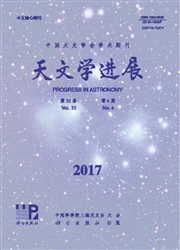

 中文摘要:
中文摘要:
高精度时间频率的产生和超高精度时频信号的传递是现代物理学、天文学和计量科学的基础。空间原子钟组计划(Atomic Clock Ensemble in Space,ACES)是由欧洲空间局实施的基于国际空间站(International Space Station,ISS)微重力环境下的新型空间微波原子钟实验验证项目。概要介绍ACES项目基本情况,重点介绍ACES项目的主要科学和技术目标,围绕科学目标而形成的ACES组成结构,并梳理涉及的关键技术,特别介绍了ACES将应用的超高精度时频传递技术,为我国自主研究并实现相关空间时间频率系统及其应用提供参考。最后简述了我国正在建设的空间站时频系统主要情况和实施计划。
 英文摘要:
英文摘要:
One of the foundations for the development of modern physics, astronomy and metrology is the generation, transfer and measurement of high precision time frequency signals. As a space mission for the study of high precision time frequency signals, Atomic Clock Ensemble in Space, or ACES, sponsored by European Space Agency to launch in 2017 or later, will take advantage of the excellent stability performance of microwave atomic clocks in a microgravity environment. One clock using laser-cooled Cs atoms working together with one hydrogen maser clock are planned to be placed onboard the International Space Station in hope to produce a frequency standard with both accuracy and stability reaching the level of 10-(-16). A microwave link along with a laser link will be set up between ACES and ground atomic clocks distributed around the world for high precision comparison and transfer. Various basic researches will benefit from a high precision space atomic clock such as the verification of Einstein's general relativity, detection of possible time variability of certain fundamental constants in physics, as well as brand new applications such as relativistic gravity and GNSS remote sensing. This paper reviews and summarizes the principle and architecture of this promising space mission. And more importantly some major challenges that ACES faces and tackles are discussed. China is developing its own space clock program,we hope this paper will encourage more science and technological efforts in related research areas.
 同期刊论文项目
同期刊论文项目
 同项目期刊论文
同项目期刊论文
 期刊信息
期刊信息
